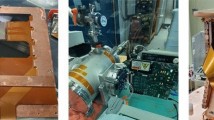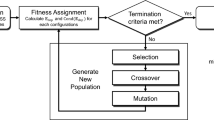Two methods of setting the threshold for determining the difference of one γ-ray spectrum from another in the case where these differences are related with the presence of explosives are compared. In the first method, the threshold is set according to a general likelihood function corresponding to the energy channels of the spectrum. In this method, to improve the detection characteristics the number of counts in the channels must be multiplied by weighting factors. In the second method, the threshold is set according to the channel combinations. Here it is necessary to sort through the channel combinations. The calculations of the detection characteristics are performed for two setups: a neutron-activation channel is used in one and inelastic neutron scattering is used in the other. It is established that in this case the threshold setting according to the channel combinations gives better detection characteristics than threshold setting according to a likelihood function. Detection quality increases as the number of processing channels increases.
Similar content being viewed by others
References
Yu. V. Gavrish, A. V. Sidorov, and A. M. Fialkovskii, “Nondestructive elemental analysis for finding explosives and fissile materials when checking customs freight,” At. Énerg., 95, No. 1, 39–44 (2003).
S. Kozlovsky, V. Lyzyurov, A. Laykin, and Yu. Olshansky, “Developmnet of a combined device for the detection of unauthorized transportation of explosive fissionable and radioactive materials,” Nucl. Instrum. Meth. Phys. Res. A, 505, 478–481 (2003).
A. V. Kuznesov, A. V. Evsenin, D. N. Vakhtin, et al., “Use of portable neutron generators with a built-in detector of associated particles for detecting dangerous materials,” in: Int. Sci.-Techn. Conf. on Portable Neutron Generators and the Technology Based on Them, VNIIA im. I. L. Dukhova, Moscow, October 18–22, 2004, pp. 286–293.
A. Buffler, “Contraband detection by fast neutron scattering,” in: 2nd Nuclear Technology Conf. NAC, South Africa, May 13–15, 2001, Paper D-03.
A. I. Laikin and Yu. A. Platovskikh, “Optimal processing of information from detector soused for finding explosives by the neutron-radiation analysis method,” At. Énerg., 101, No.5, 379–387 (2006).
B. R. Levin, Theoretical Principles of Statistical Radio Engineering, Sov. Radio, Moscow (1975).
V. B. Goryainov, I. V. Pavlov, G. M. Tsvetkov, et al., Mathematical Statistics, Izd. MGTU im. Baumana (2002).
G. H. Hardy, J. E. Littlewood, and G. Pólya, Inequalities [Russian translation], Izd. Inostr. Lit., Moscow (1948).
Author information
Authors and Affiliations
Additional information
Translated from Atomnaya Énergiya, Vol. 109, No. 3, pp. 165–169, September, 2010.
Rights and permissions
About this article
Cite this article
Laikin, A.I., Platovskikh, Y.A. Optimal use of spectrometric information for discovering explosives by neutron-radiation analysis and inelastic neutron scattering. At Energy 109, 207–212 (2011). https://doi.org/10.1007/s10512-011-9346-z
Received:
Published:
Issue Date:
DOI: https://doi.org/10.1007/s10512-011-9346-z




